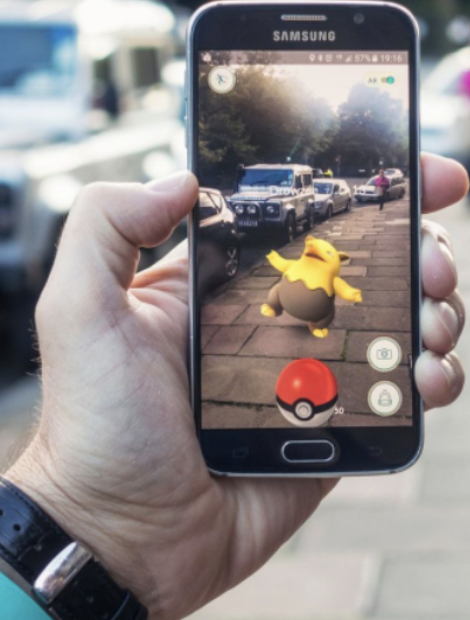January 25, 2023
What is Augmented Reality in e-commerce and can UX optimize it?
What is Augmented Reality (AR)?
To begin, it's important to understand what AR is. Essentially, AR is a technology that inputs virtual content into a user's view of the existing world. A prime example of this is the popular game, Pokémon GO. In this game, players are able to see digital creatures superimposed on real-world surroundings as they walk down the street. This is a key aspect of AR, which enhances the real world for the user.
It's important to note the difference between AR and virtual reality (VR). While AR enhances the real world, VR is a complete immersion of the user in a virtual world. Additionally, VR requires specialized technology such as a VR headset, while AR can be implemented through the use of a smartphone camera.
In addition to augmented reality, another term that is commonly used in the industry is extended reality (XR). XR is an umbrella term that encompasses virtual reality, augmented reality, and mixed reality (MR). MR is a situation where virtual and real-world objects coexist and interact with each other.
As mentioned earlier, AR is becoming increasingly common in our day-to-day lives. Social media platforms have begun to incorporate AR features, and it is no longer a technology that is limited to specific industries or niche groups.
In the next part of the article, we will explore real-life implementations of AR and how they are being used in various industries.
AR in Various Industries
Since the COVID-19 pandemic, AR has been gaining ground in e-commerce as a means to provide customers with a more immersive and interactive shopping experience. A study by the Nielsen Norman Group in 2020 found that certain products, such as furniture, makeup, personal wearables, and fashion items, are particularly well-suited to AR features. These products are those for which aesthetic qualities are important and depend on the context, such as how a piece of furniture would look in a customer's home or how a shade of makeup would look on a customer's skin tone.
The study also found that accuracy and realism are crucial in determining the value of an AR feature, as customers want to be able to imagine how a product will look in real life. Negative experiences with AR features can also influence a customer's overall perception of the technology. Additionally, customers tend to have higher technical expectations for high-end brands, so it's important for these brands to ensure that their AR features are accurate and realistic.
One example of AR in daily life is the IKEA app, which allows users to virtually try on a piece of furniture in their home to see how it would fit. Another example is parking assistance in cars, which uses AR to provide drivers with digital indications superimposed on the real world to aid in maneuvering and parking.
In the fashion industry, brands are utilizing AR to allow customers to virtually try on clothing and accessories to see how they fit. Virtual try-on features for makeup on e-commerce websites are also becoming more common. This allows customers to see how a specific shade of lipstick or eyeshadow would look on them before making a purchase.
Lancôme Virtual Try On
AR is a technology that is being adopted by various industries and is becoming increasingly integrated into our daily lives. It has a wide range of use cases, from trying on furniture and clothes to parking assistance.
Best Practices for Implementing AR in E-commerce
When it comes to UX best practices for AR in e-commerce, the first step is to determine whether AR is adding any additional value to the product and the online purchase process. This will ensure that the AR feature is effectively enhancing the customer experience. It's also important to consider how the AR feature will be integrated into the website, and to make sure it's advertised in a way that's easily visible to customers. Avoid using pop-ups to present the AR service as they tend to be ignored by users.
It is also important to have clear call-to-action (CTA) labels for the AR feature on both the product listing page (PLP) and the product page (PP) as AR does not have a standard representation yet. These labels should be visible, close to the product picture, and easy to understand. The AR feature itself should be simple to use, with a smooth transition from the website to the AR feature, and clear explanations for why certain authorizations are required.
It is also important to guide users through the AR feature, providing instructions and visual cues in context, rather than overwhelming them with text. Anticipating technical difficulties, such as bugs or user errors, and offering clear error messages and alternative flows is also important.
Additionally, it is important to take into account the environment in which the AR feature will be used. For example, if the feature will be used in a public environment where users may be in a hurry, it should be simple and straightforward. On the other hand, if the feature will be used in a private environment, it can be more complex with additional features.
Finally, always be mindful of user safety when designing AR interfaces and make sure to help users understand any constraints they may have, such as lighting or distance between themselves and the camera.
In summary, as AR is becoming more and more common in e-commerce, it is important to ensure that the AR feature is accurate and realistic, to consider what value it brings to the product, and to advertise it effectively to users.
Conclusion
In summary, augmented reality is a technology that can bring a lot of value to e-commerce, especially for products that have aesthetic qualities that depend on the context. When implementing AR in e-commerce, it is important to start with the question of whether AR will bring additional value to the product and the online purchase process. It is also important to advertise the AR feature on the website and make sure it is clearly labeled and visible.
Additionally, the AR service should be simple to use and offer clear guidance and instructions. The realism of the rendering is also important for a satisfying user experience.
Overall, it is important to keep in mind the specific case of the products and the user journey when implementing AR in e-commerce.
All articles from the category: User research | RSS



